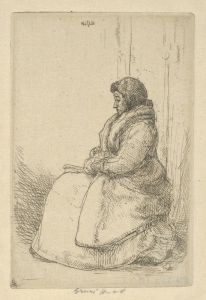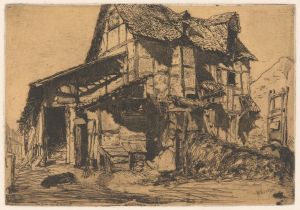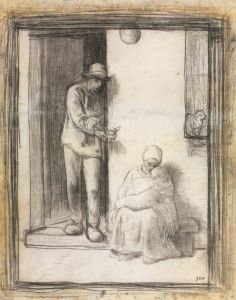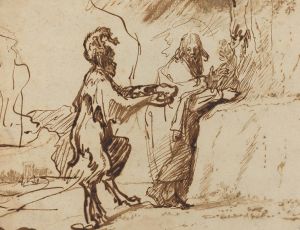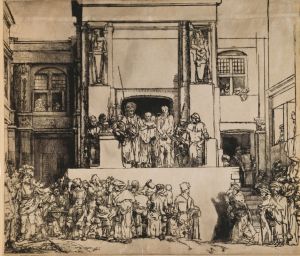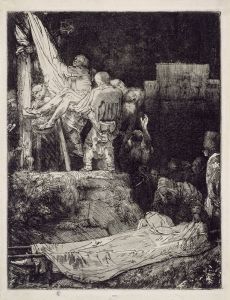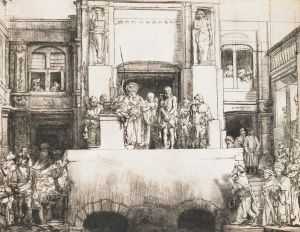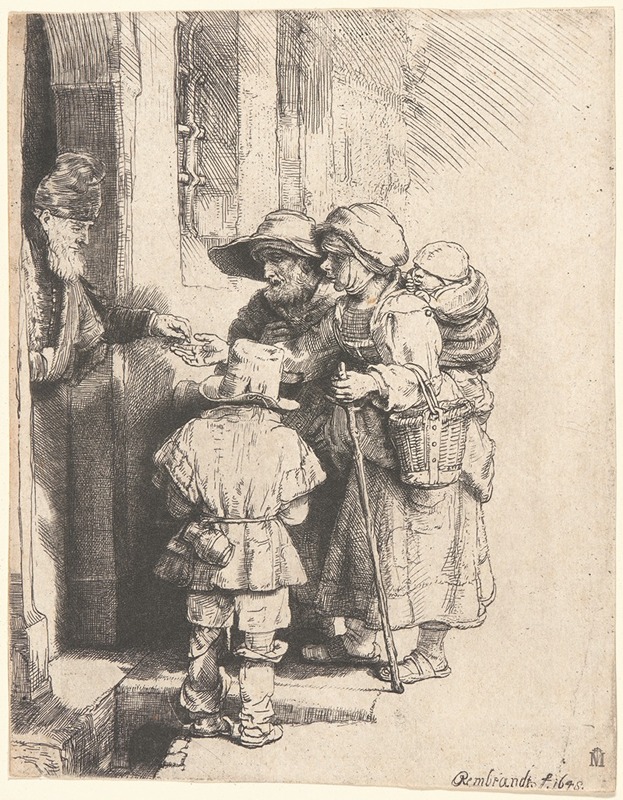
Beggars Receiving Alms at the Door of a House
A hand-painted replica of Rembrandt van Rijn’s masterpiece Beggars Receiving Alms at the Door of a House, meticulously crafted by professional artists to capture the true essence of the original. Each piece is created with museum-quality canvas and rare mineral pigments, carefully painted by experienced artists with delicate brushstrokes and rich, layered colors to perfectly recreate the texture of the original artwork. Unlike machine-printed reproductions, this hand-painted version brings the painting to life, infused with the artist’s emotions and skill in every stroke. Whether for personal collection or home decoration, it instantly elevates the artistic atmosphere of any space.
"Beggars Receiving Alms at the Door of a House" is a drawing by the renowned Dutch artist Rembrandt van Rijn. Rembrandt, born in 1606 in Leiden, is considered one of the greatest visual artists in the history of art and the most important in Dutch art history. His contributions to art came during the Dutch Golden Age, a period of great wealth and cultural achievement in the Netherlands.
This particular drawing, "Beggars Receiving Alms at the Door of a House," is an example of Rembrandt's skill in capturing human emotion and social realities. The drawing depicts a scene where beggars are receiving charity at the entrance of a house. This subject matter reflects Rembrandt's interest in the human condition and his ability to portray it with empathy and realism.
Rembrandt's drawings are noted for their expressive quality and the use of light and shadow, which he mastered in his paintings as well. In this drawing, he employs a keen sense of observation and detail to bring the scene to life. The figures are rendered with a sense of movement and emotion, capturing a moment of interaction between the beggars and the giver of alms. This interaction is central to the composition, highlighting themes of charity, poverty, and human connection.
The drawing is executed with pen and ink, a medium that Rembrandt used frequently in his sketches and studies. His use of line is both economical and expressive, allowing him to convey a great deal of information with minimal strokes. This technique is evident in the way he captures the textures of clothing and the expressions on the faces of the figures.
Rembrandt's choice of subject matter in this drawing is consistent with his broader body of work, which often includes scenes of everyday life and the struggles of ordinary people. His ability to depict such scenes with sensitivity and depth has contributed to his lasting reputation as a master artist.
The exact date of the drawing is not definitively known, but it is believed to have been created during the height of Rembrandt's career in the mid-17th century. During this time, Rembrandt was living in Amsterdam, where he produced many of his most famous works. His drawings, including "Beggars Receiving Alms at the Door of a House," were not merely preparatory studies for paintings but were valued as works of art in their own right.
Rembrandt's work, including his drawings, has been extensively studied and admired for its technical brilliance and emotional depth. "Beggars Receiving Alms at the Door of a House" exemplifies his ability to capture the essence of human experience, making it a significant piece in the study of his oeuvre.
Today, Rembrandt's drawings are held in high regard and are part of collections in major museums around the world. They continue to be a source of inspiration and study for artists, historians, and art enthusiasts alike, offering insight into the life and times of one of history's greatest artists.





